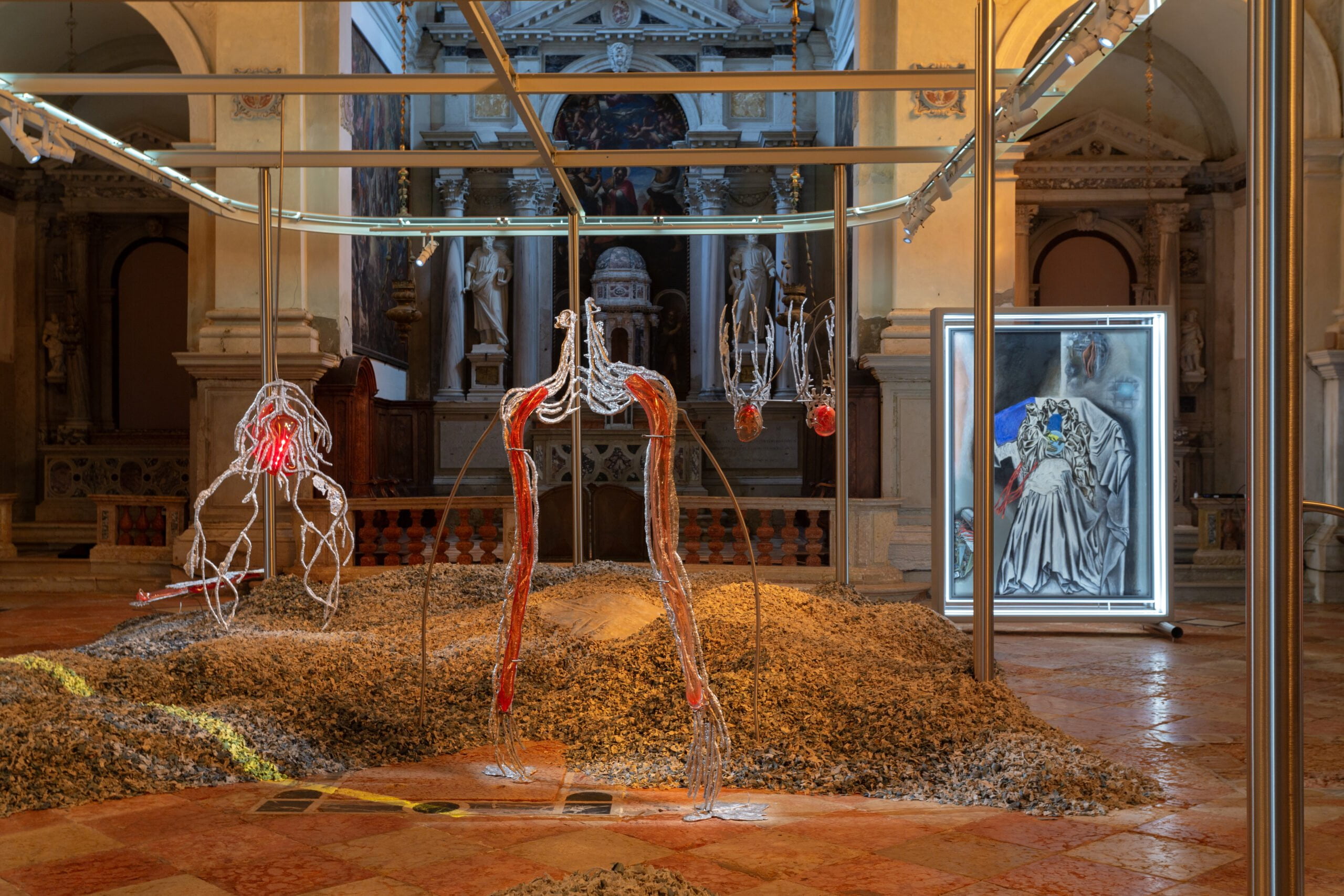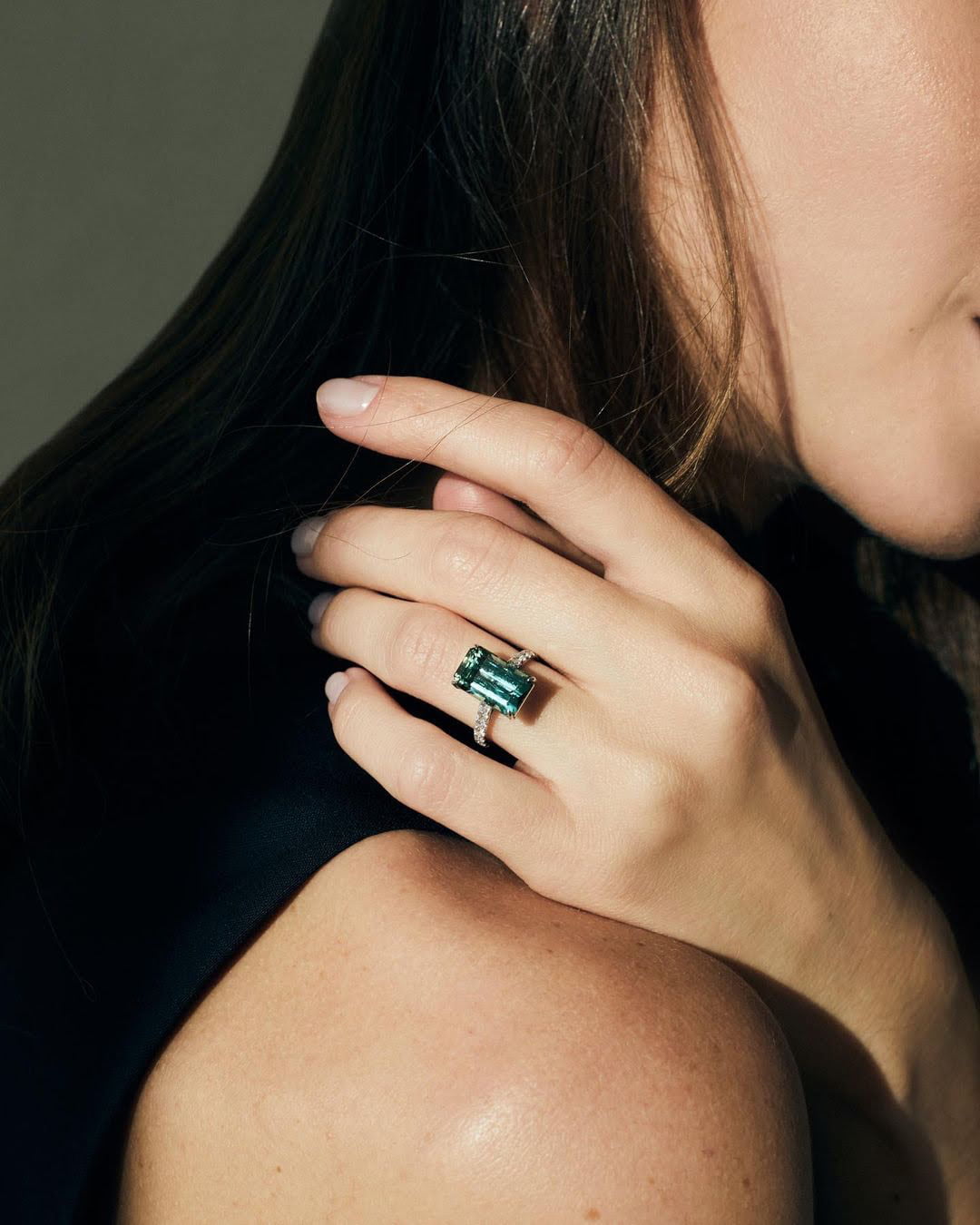Lithuanian Pavilion Opens at the Venice Contemporary Art Biennale
The LNMA General Director Dr. Arūnas Gelūnas serves as the commissioner of the pavilion. The exhibition is curated by Valentinas Klimašauskas and João Laia. The installation’s landscape and architecture were created by Petras Išora-Lozuraitis and Ona Lozuraitytė-Išorė of the “Išora x Lozuraitytė Studio.” The Lithuanian National Pavilion will be hosted in the Sant’Antonino Church and will be open to the public until October 31.

Lietuvos nacionalinis paviljonas Venecijos šiuolaikinio meno bienalėje. „Pakui Hardware“ ir Marijos Teresės Rožanskaitės paroda „Uždegimas“, 2024. Ugniaus Gelgudos fotografijos.
“Pakui Hardware’s visionary perspective provocatively addresses pressing human issues—pandemic, social, and economic inflammations affecting our bodies and the planet,” states Dr. A. Gelūnas.
Previously showcased at the LNMA Museum of Applied Arts and Design last autumn, “Inflammation” is now making its international debut in Venice, enriched with Rožanskaitė’s paintings and adapted to the unique environment of the Sant’Antonino Church, which features significantly higher spaces than the historical arsenal in Vilnius and is subject to strict conservation regulations. The church, built by the Badoer family in the 7th century and renovated in the 12th and 17th centuries, is currently under restoration and rarely hosts secular activities; this is the first time it will house a national pavilion.
Even before its official opening, “Inflammation,” which tackles contemporary societal issues, has attracted attention from both Lithuanian and international media. Influential cultural publications like “Artform,” “Art Review,” and “Kunstforum International” have published interviews and reviews with the artists.
A Multigenerational Examination of Systemic Harm and Healing
“Inflammation” intertwines artistic practices and experiences of different generations, exploring the inflammations (physical, social, and planetary) caused by today’s economic and social conditions. Rožanskaitė’s paintings and “Pakui Hardware’s” sculptural installations converge on themes of medicine, health, nature, space, and industrial landscapes.
Inspired by Marya Rupa and Raj Patel’s book “Inflamed: Deep Medicine and the Anatomy of Injustice,” “Pakui Hardware” uses inflammation as a metaphor for systemic harm inflicted on humanity and the planet.

Lietuvos nacionalinis paviljonas Venecijos šiuolaikinio meno bienalėje. „Pakui Hardware“ ir Marijos Teresės Rožanskaitės paroda „Uždegimas“, 2024. Ugniaus Gelgudos fotografijos.
“Inflammation allows us to understand what is invisible to the naked eye—the history, systems, and repressed internal fires embedded in human and planetary bodies. Recognizing inflammation can become a starting point for healing if we seriously consider the interconnectedness of all things, both living and inert. The installation invites the viewer to experience a slightly feverish and dizzying state of mind and body, leading to an understanding of the complex web of life, encompassing numerous subjects and areas—from medicine to hybrid nature, from the nervous system to the sounds of technological scanning,” explain N. Černiauskaitė and U. Gelguda.
The glass and aluminum sculptures by “Pakui Hardware” resemble enlarged nervous systems with pulsing inflammation points. Their vitality is enhanced by a scanning beam mimicking medical procedures. Rožanskaitė’s paintings convey the tension of unnamed diseases, sterile operating rooms, medical offices, mechanical objects, and chronic inflammations of cosmic bodies.

NEWS
Lithuanian Pavilion Opens at the Venice Contemporary Art Biennale
On Friday, April 19, the Lithuanian National Museum of Art (LNMA) is inaugurating the Lithuanian National Pavilion at the 60th Venice Contemporary Art Biennale. The exhibition titled "Inflammation," by the internationally acclaimed artist duo Neringa Černiauskaitė and Ugnius Gelguda, known as "Pakui Hardware," along with renowned painter Marija Teresė Rožanskaitė (1933–2007), will be presented to a global audience.
Success Strategy: 100% Sincerity
Giedrimas Tumėnas, a lover of gemstones and jewelry and founder of the brand "Août," has dedicated his life to this industry and amassed extensive knowledge about precious stones. From his early career selling silver jewelry in small Lithuanian towns to working with the world's rarest investment diamonds and gems, and selling them to the world's elite at leading jewelry houses such as Tiffany & Co., Chopard, Graff, and Moussaieff, his journey is remarkable.
Copenhagen Fashion Week 2024
Copenhagen is renowned as a leader in sustainable fashion, and its fashion week consistently incorporates themes of sustainability and responsible design. Designers frequently emphasize not only style but also the environmental impact of the production process and the sources of the materials used. For the third consecutive season, all participating brands are required to adhere to 18 minimum responsibility standards, including avoiding single-use plastics and ensuring that at least 50% of their collections are made from certified recycled or repurposed materials.
PAKUI HARDWARE: INFLAMMATION – A GLOBAL HUMANITY PROBLEM
Civilization, economic and social systems pass on chronic ailments from generation to generation, while humanity destroys itself. This is the theme explored in the exhibition by the creative duo "Pakui Hardware," composed of Neringa Černiauskaitė and Ugnius Gelguda, serving as an introduction to Lithuania's upcoming presentation at the Venice Biennale.













